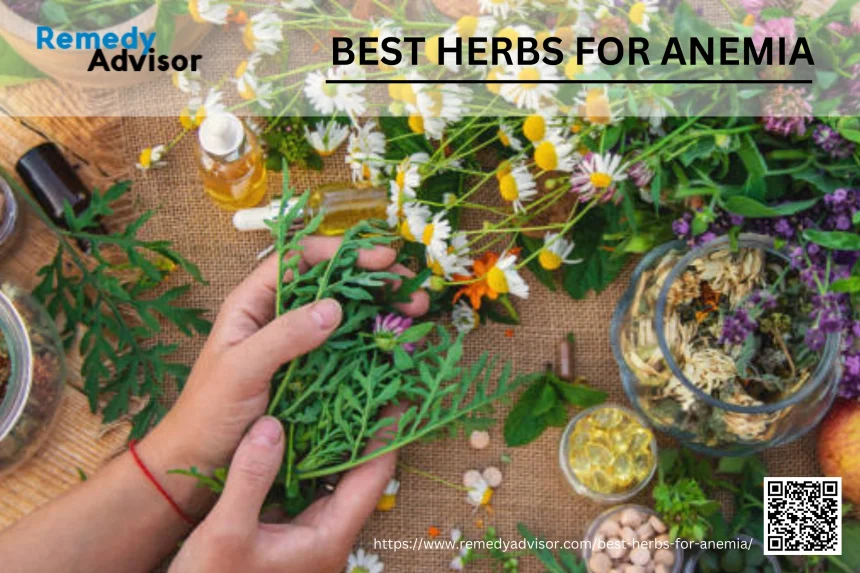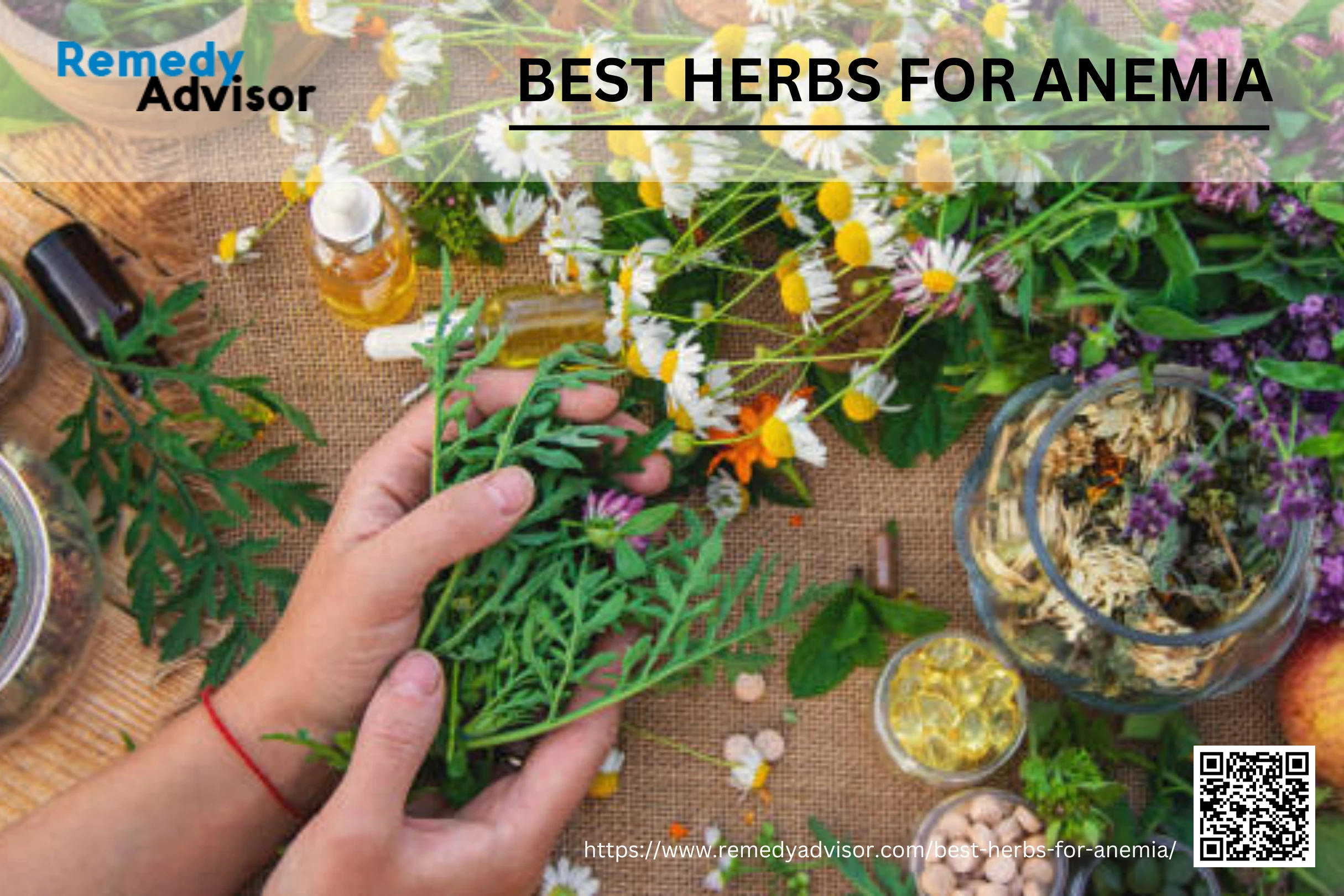 Anemia is a condition characterized by a reduction in the mass of red blood cells or the amount of hemoglobin, leading to decreased oxygen delivery to organs. The World Health Organization (WHO) defines anemia as hemoglobin (Hb) levels below 12.0 g/dL in women and below 13.0 g/dL in men. However, these thresholds can vary based on factors such as age, sex, ethnicity, and physiological status. In older adults, anemia is often defined by similar Hb levels, but the condition is more prevalent and can be associated with various underlying causes, including nutritional deficiencies, chronic diseases, and unexplained factors. Anemia is not a standalone condition but often signifies an underlying disease or deficiency, necessitating a comprehensive diagnostic approach that includes patient history, physical examination, and laboratory tests. Understanding the pathophysiology and classification of anemia is crucial for effective diagnosis and treatment, especially in vulnerable populations such as the elderly.
Anemia is a condition characterized by a reduction in the mass of red blood cells or the amount of hemoglobin, leading to decreased oxygen delivery to organs. The World Health Organization (WHO) defines anemia as hemoglobin (Hb) levels below 12.0 g/dL in women and below 13.0 g/dL in men. However, these thresholds can vary based on factors such as age, sex, ethnicity, and physiological status. In older adults, anemia is often defined by similar Hb levels, but the condition is more prevalent and can be associated with various underlying causes, including nutritional deficiencies, chronic diseases, and unexplained factors. Anemia is not a standalone condition but often signifies an underlying disease or deficiency, necessitating a comprehensive diagnostic approach that includes patient history, physical examination, and laboratory tests. Understanding the pathophysiology and classification of anemia is crucial for effective diagnosis and treatment, especially in vulnerable populations such as the elderly.
Types of Anemia
Anemia isn’t just a single health issue; it’s an umbrella term for various conditions that affect the blood’s ability to carry oxygen. Each type of anemia comes with its own causes, symptoms, and treatment options. Whether it’s due to a lack of certain nutrients, chronic health conditions, or genetic factors, understanding the different forms of anemia is essential for effective diagnosis and management. Here’s a closer look at some of the most common types of anemia and what sets them apart.
- Iron-deficiency anemia
- Vitamin B12 deficiency anemia (pernicious anemia)
- Folate deficiency anemia
- Aplastic anemia
- Hemolytic anemia
- Sickle cell anemia
- Thalassemia
- Anemia of chronic disease
- Aplastic anemia
- Megaloblastic anemia
- Sideroblastic anemia
- Lead toxicity anemia
- Blood loss anemia
- Anemia of kidney disease
- Anemia of endocrine disorders
- Myelodysplastic anemia
- Anemia of prematurity
- Autoimmune hemolytic anemia
- Microangiopathic hemolytic anemia
- Transfusion-dependent anemia
Common causes of Anemia
Anemia occurs when your body doesn’t have enough healthy red blood cells to carry adequate oxygen to your tissues. But what causes this condition in the first place? From nutrient deficiencies and chronic illnesses to genetic disorders and lifestyle factors, there are many reasons why anemia can develop. Understanding these causes can help in early detection and effective treatment. Let’s explore some of the most common causes of anemia and how they affect your overall health.
- Iron deficiency
- Vitamin B12 deficiency
- Folate (vitamin B9) deficiency
- Chronic diseases (e.g., kidney disease, cancer, rheumatoid arthritis)
- Blood loss (e.g., heavy menstrual periods, gastrointestinal bleeding)
- Inherited disorders (e.g., sickle cell anemia, thalassemia)
- Bone marrow disorders
- Hemolytic disorders (increased destruction of red blood cells)
- Pregnancy
- Certain medications
- Alcoholism
- Lead poisoning
- Chronic inflammation
- Hypothyroidism
- Nutritional deficiencies
- Aplastic anemia
- Parasitic infections (e.g., malaria)
- Autoimmune disorders
- Chemotherapy treatments
- Exposure to toxic chemicals
Best herbs for Anemia
Using herbs to care for anemia instead of conventional medication offers several advantages, primarily due to the reduced side effects and enhanced bioavailability of natural compounds. Conventional treatments for anemia, such as iron supplements and blood transfusions, often come with adverse effects like nausea, vomiting, constipation, and poor absorption due to the overexpression of hepcidin, a hormone that regulates iron homeostasis. In contrast, herbal remedies such as those used in traditional Chinese and Persian medicine, have been shown to be effective in treating various types of anemia with fewer side effects. For instance, Chinese herbal medicine (CHM) has been associated with lower risks of overall and anemia-related mortalities in patients with aplastic anemia. Additionally, medicinal plants like grapes, coconuts, pomegranates, and astragalus have been identified for their hematopoietic properties, making them suitable alternatives or adjuncts to conventional therapies. Furthermore, plant extracts such as those from Moringa oleifera and Psidium guajava have demonstrated significant iron content and efficacy in improving anemia without the harmful effects associated with synthetic iron supplements. Therefore, the integration of herbal medicine into anemia treatment protocols not only provides a natural and holistic approach but also minimizes the risk of side effects, making it a viable alternative to conventional pharmacological agents.
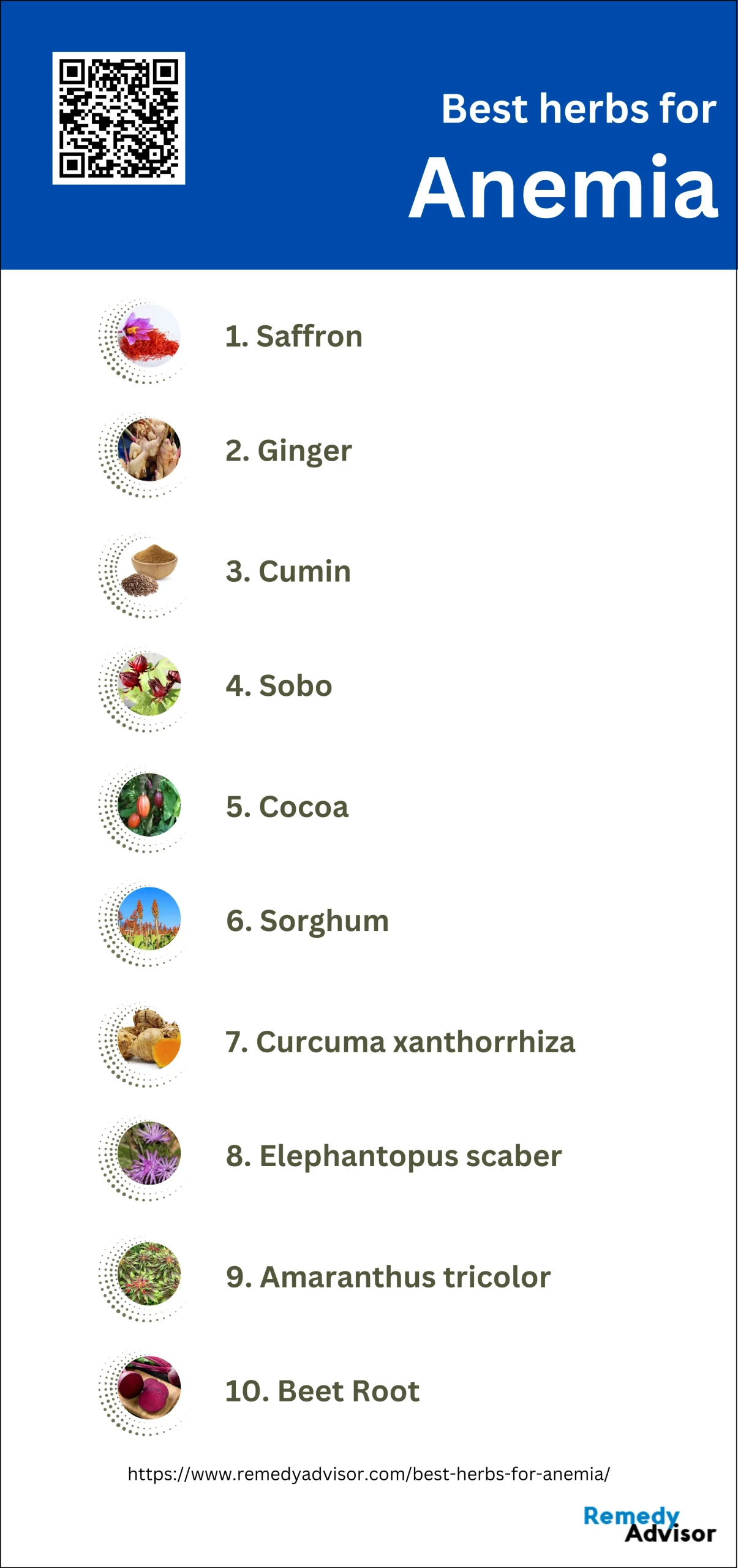
1. Saffron
Saffron may indeed be beneficial for anemia due to its rich iron content. Iron is a crucial component in the production of hemoglobin, the protein in red blood cells responsible for carrying oxygen throughout the body. A 100-gram serving of saffron contains 11.1 milligrams of iron, which is approximately 61% of the daily recommended value. This high iron content can help boost the production of red blood cells and potentially alleviate symptoms of iron-deficiency anemia, the most common type of anemia. Additionally, saffron’s antioxidant properties, particularly from compounds like crocin and crocetin, may help protect existing red blood cells from damage, further supporting overall blood health.
What Research Says?
- Based on research carried out by Bulletin of the National Nutrition Institute of the Arab Republic of Egypt, Saffron supplementation in diets significantly increased serum iron levels, hemoglobin, hematocrit, and ferritin in rats, indicating its potential to improve iron bioavailability and treat anemia.
How to Use
Saffron can be a beneficial supplement for those with anemia due to its high iron content. To use saffron for anemia, incorporate it into your diet by adding a few strands to rice dishes, soups, or teas. Alternatively, saffron supplements are available in capsule form, with a typical dosage of 20-30 mg per day. Combining saffron with vitamin C-rich foods can enhance iron absorption. However, it’s crucial to consult a healthcare professional before using saffron as a treatment for anemia, as it should complement, not replace, medical advice and prescribed treatments.
Potential side effects of Saffron
Saffron can cause side effects such as drowsiness, stomach problems, nausea, vomiting, and allergic reactions. In large doses (5 grams or more), it can be toxic, causing poisoning symptoms like yellowing of the skin and mucous membranes, dizziness, and bloody diarrhea. Extremely high doses (12-20 grams) can be fatal.
Who should avoid Saffron
Pregnant women should avoid saffron in amounts larger than those found in food, as it may cause miscarriage. People with bipolar disorder should not use saffron due to its potential to trigger excitability and impulsive behavior. Individuals allergic to Lolium, Olea, or Salsola plant species should also avoid saffron due to potential allergic reactions.
Interaction with medications
Saffron may interact with several medications. It can enhance the effects of blood pressure medications, potentially causing hypotension. It may also interact with diabetes medications, leading to excessively low blood sugar. Saffron can increase the effects of sedative medications, potentially causing breathing problems or excessive drowsiness. Always consult a healthcare provider before combining saffron with medications.
2. Ginger
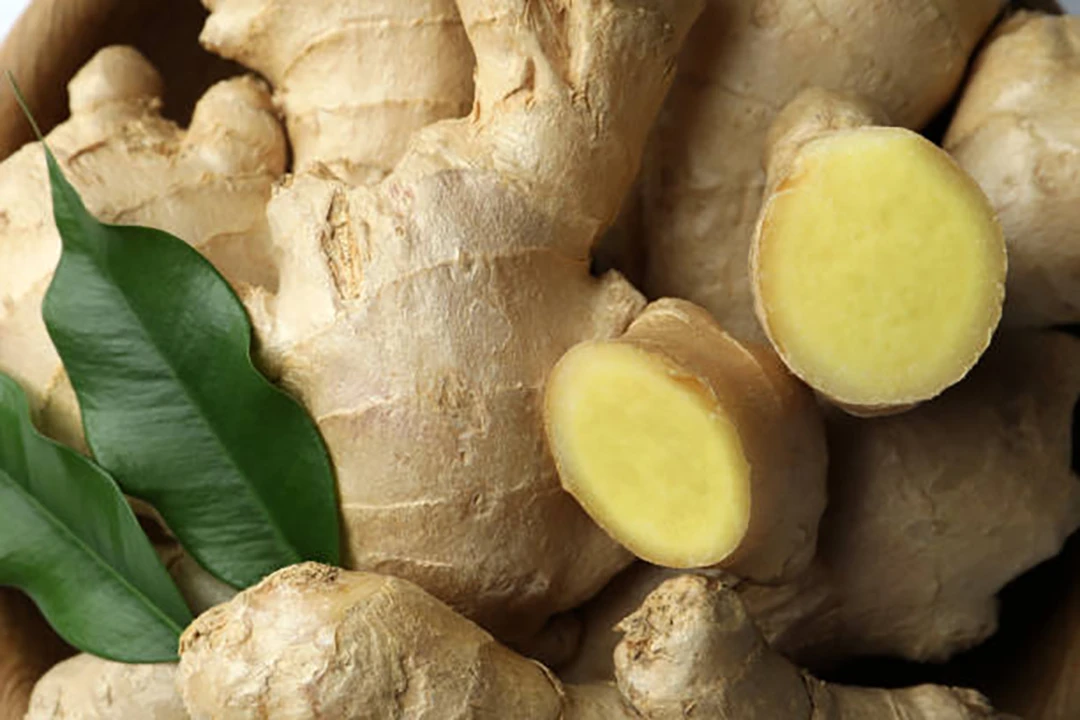
Ginger has shown promising potential as a beneficial supplement for anemia, particularly iron deficiency anemia (IDA). Studies have demonstrated that ginger can enhance iron absorption, with one ex vivo study showing a 28.5% increase in iron uptake in rat jejunum compared to controls. Ginger’s high polyphenol content contributes to its antioxidant and anti-inflammatory properties, which can protect against oxidative stress and reduce inflammation associated with anemia. Additionally, ginger has been found to stimulate the production of red blood cells and increase hemoglobin levels. In human studies, combining ginger with oral iron therapy improved hematological and iron parameters in anemic patients more effectively than iron therapy alone. Furthermore, ginger’s bioactive compounds can enhance erythropoiesis and potentially help prevent iron overload.
What Research Says?
- As per studies undertaken by Molecules and Bulletin of the National Nutrition Institute of the Arab Republic of Egypt, Ginger supplementation has been shown to enhance iron absorption, increase serum iron levels, and improve hematological parameters such as hemoglobin, hematocrit, and ferritin levels in both animal and limited human studies.
- According to studies performed by Journal of Nutrition & Intermediary Metabolism, Studies have shown that ginger can increase red blood cell counts and hemoglobin levels, particularly in populations with specific conditions such as smokers.
How to use
To use ginger for anemia, incorporate it into your daily diet by adding fresh ginger to teas, smoothies, or cooking. You can also take ginger supplements, typically 250mg twice daily after meals. Combining ginger with iron-rich foods or iron supplements may enhance iron absorption. For maximum benefit, consume ginger alongside vitamin C-rich foods. However, it’s crucial to consult a healthcare professional before using ginger as a treatment for anemia, as it should complement, not replace, prescribed treatments. Monitor your iron levels regularly and adjust intake as needed.
Potential side effects of Ginger
Ginger can cause mild side effects such as heartburn, diarrhea, stomach discomfort, and burping, especially when consumed in large amounts. Higher doses (over 5 grams daily) increase the risk of these side effects. In rare cases, ginger may cause allergic reactions, skin irritation, or exacerbate symptoms of acid reflux. Some individuals may experience increased bleeding risk due to ginger’s blood-thinning properties.
Who should avoid Ginger
Pregnant women should be cautious with high doses of ginger, particularly in late pregnancy. Individuals with bleeding disorders, gallstones, or low blood pressure should avoid or limit ginger intake. People scheduled for surgery should stop using ginger at least two weeks prior. Those with certain heart conditions or taking blood pressure medications should consult their healthcare provider before consuming ginger regularly.
Interaction with medications
Ginger can interact with various medications. It may enhance the effects of blood thinners like warfarin, aspirin, and clopidogrel, increasing bleeding risk. Ginger can also interact with diabetes medications, potentially causing blood sugar to drop too low. It may increase the absorption of certain drugs like losartan, amplifying their effects and side effects. Always consult a healthcare professional before combining ginger with medications.
3. Cumin
Cumin is indeed beneficial for anemia, particularly iron-deficiency anemia, due to its exceptionally high iron content. Just one teaspoon of cumin provides approximately 20% of the daily recommended iron intake. This spice is an excellent source of iron, containing about 66.36mg of iron per 100 grams, which is more than five times the daily requirement for an adult. The iron in cumin is highly bioavailable, thanks to the presence of supporting nutrients like vitamin C, folic acid, and proteins in the spice. Furthermore, cumin increases the activity of phytase enzymes, which break down phytic acid, an antinutrient that can inhibit mineral absorption. By reducing phytic acid, cumin enhances the bioavailability of minerals like iron, calcium, and phosphorus.
What Research Says?
- Research undertaken by Bulletin of the National Nutrition Institute of the Arab Republic of Egypt reveals Cumin powder, when included in the diet, significantly increases serum iron levels, hemoglobin, hematocrit, and ferritin in rats, suggesting its potential as an effective food supplement for preventing and treating anemia.
How to use
To use cumin for anemia, incorporate it regularly into your diet. Add a teaspoon of ground cumin to soups, stews, curries, or rice dishes. You can also make cumin tea by steeping a teaspoon of cumin seeds in hot water for 5-10 minutes. For maximum iron absorption, combine cumin with vitamin C-rich foods like citrus fruits or bell peppers. Roasting cumin seeds before use can enhance their flavor and nutrient availability. As a supplement, 300-600 mg of cumin powder daily may be beneficial, but consult a healthcare professional before starting any supplement regimen.
Potential side effects of Cumin
Cumin may cause side effects such as upset stomach, heartburn, and excessive burping. In large quantities, it can lead to liver and kidney damage due to its unstable oil content. Some individuals may experience skin rashes or allergic reactions. Cumin can also cause heavy menstrual bleeding and has narcotic properties that may result in drowsiness, mental blurring, and nausea.
Who should avoid Cumin
Pregnant women should avoid medicinal doses of cumin due to potential abortifacient effects. Individuals with bleeding disorders should use caution as cumin may slow blood clotting. People with diabetes need to monitor their blood sugar levels closely when consuming cumin. Those scheduled for surgery should stop using cumin at least two weeks prior. Individuals with skin sensitivities should limit cumin intake.
Interaction with medications
Cumin can interact with several medications. It may enhance the effects of diabetes medications, potentially causing hypoglycemia. Cumin can increase the risk of bleeding when taken with anticoagulant or antiplatelet drugs. It may also increase the absorption and effects of rifampin. Always consult a healthcare provider before combining cumin with medications, especially those for diabetes, blood thinning, or antibiotics.
4. Sobo
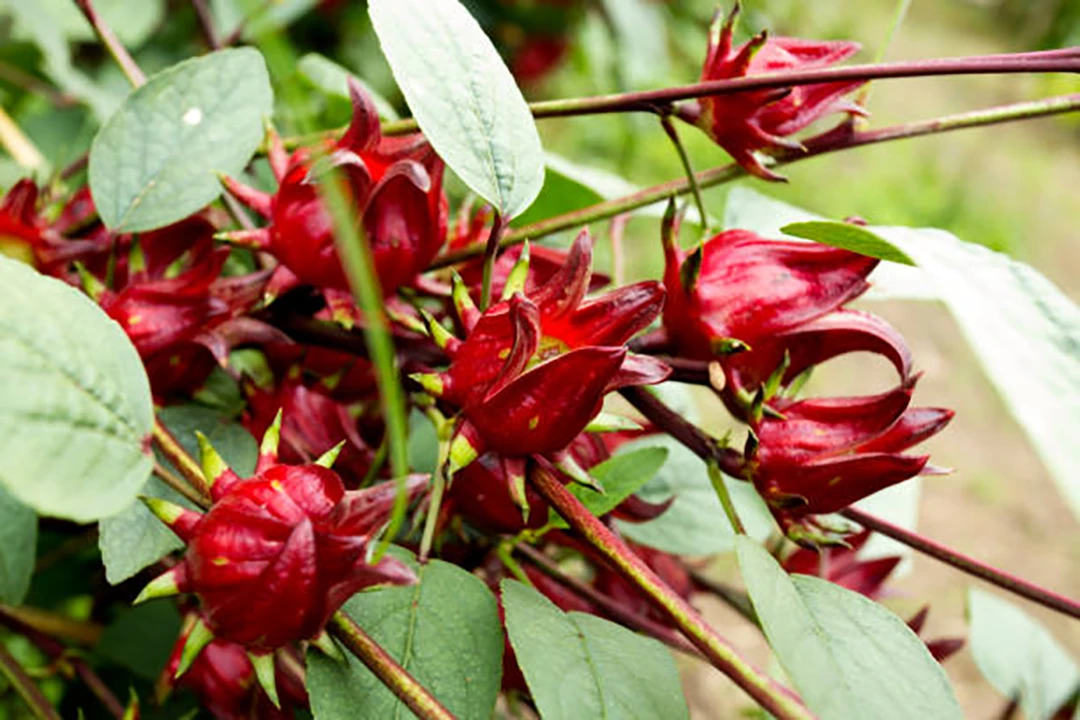
Sobo, also known as roselle or hibiscus sabdariffa, can be beneficial for anemia due to its high iron content. The calyces of the hibiscus plant contain significant amounts of iron, which is essential for the production of hemoglobin in red blood cells. Additionally, sobo is rich in vitamin C, which enhances iron absorption in the body, making it more effective in combating iron-deficiency anemia. The anthocyanins present in sobo also have antioxidant properties that can protect red blood cells from oxidative stress and damage. Some studies have shown that regular consumption of hibiscus tea can increase hemoglobin levels and red blood cell count.
What Research Says?
- Findings from research done by International Journal of Biochemistry Research & Review show Sobo significantly increases hemoglobin concentration and packed cell volume in anemic rats treated with phenylhydrazine, indicating its potential to reverse anemia.
- As research performed by Journal of Ethnopharmacology suggests Sobo contains high levels of iron and zinc, which are essential minerals for combating anemia. Its decoction shows high solubility and mineral availability, making these nutrients more accessible for absorption.
How to Use
To use sobo for anemia, steep dried hibiscus calyces in hot water for 5-10 minutes to make a tea. Consume 1-2 cups daily, preferably between meals for better iron absorption. You can also add sobo to smoothies or use it to make a refreshing cold drink. For enhanced benefits, combine sobo with vitamin C-rich foods. Some people use sobo powder as a supplement, typically 1-2 teaspoons daily. However, always consult a healthcare professional before using sobo as a treatment for anemia, as individual needs may vary.
Potential side effects of sobo
Sobo (hibiscus sabdariffa) can cause side effects such as stomach upset, gas, and constipation in some individuals. In rare cases, it may lead to allergic reactions. Excessive consumption might result in liver damage, especially when taken in high concentrations. Some people may experience a temporary increase in menstrual flow. Sobo can also cause drowsiness or dizziness in sensitive individuals.
Who should avoid sobo
Pregnant women should avoid sobo as it may stimulate menstrual flow or potentially terminate pregnancy. Breastfeeding mothers should also refrain from consuming sobo due to potential harmful effects on infants. Individuals with low blood pressure should be cautious, as sobo can further lower blood pressure. People scheduled for surgery should stop using sobo at least two weeks prior due to its potential effects on blood sugar levels.
Interaction with medications
Sobo can interact with various medications. It may reduce the effectiveness of chloroquine, a malaria treatment. Sobo can enhance the effects of diabetes medications and blood pressure medications, potentially causing excessive drops in blood sugar or blood pressure. It may also alter the levels of diclofenac and losartan in the body. Sobo might increase how quickly the body eliminates certain medications metabolized by the liver.
5. Cocoa
Cocoa can be beneficial for individuals with anemia due to its rich iron content and other supportive nutrients. Dark chocolate, which contains a high percentage of cocoa, is particularly notable for its iron content, with 100 grams of 70-85% dark chocolate providing about 11.9 mg of iron, or approximately 67% of the recommended daily intake. Cocoa also contains copper, which aids in iron absorption and utilization in the body. Additionally, the flavonoids present in cocoa have antioxidant properties that can help protect red blood cells from oxidative stress and damage. Cocoa consumption may increase hemoglobin levels and improve overall blood health. Furthermore, cocoa contains small amounts of other minerals like magnesium and zinc, which play supportive roles in blood cell production and function.
What Research Says?
- Research completed by Nuts and Seeds in Health and Disease Prevention indicates Cocoa is rich in polyphenolic compounds, particularly catechins and anthocyanins, which contribute to its strong antioxidant capacity. These compounds can modify inflammatory processes and exhibit significant anti-inflammatory effects.
How to Use
To use cocoa for anemia, incorporate dark chocolate or cocoa powder into your daily diet. Aim for 2 teaspoons of cocoa powder or 40g of dark chocolate (70-85% cocoa) daily. Add cocoa powder to smoothies, oatmeal, or yogurt. Pair cocoa with vitamin C-rich foods like berries or citrus fruits to enhance iron absorption. You can also make hot cocoa using unsweetened cocoa powder and milk. Remember, while cocoa can be beneficial, it should complement a balanced diet and proper medical treatment for anemia. Always consult a healthcare professional before making significant dietary changes.Bottom of Form
Potential side effects of Cocoa
Cocoa can cause side effects such as increased heart rate, digestive discomfort, and headaches, particularly when consumed in large amounts. It contains caffeine and theobromine, which may lead to sleep disturbances, anxiety, and jitters in sensitive individuals. Excessive consumption can result in weight gain due to added sugars and fats in chocolate products. Some people may experience allergic reactions or skin irritations from cocoa.
Who should avoid Cocoa
Individuals with heart conditions should limit cocoa intake due to its caffeine content. People with gastroesophageal reflux disease (GERD) may experience worsened symptoms. Those with anxiety disorders or sleep problems should be cautious with cocoa consumption. Individuals with diabetes need to monitor their intake due to sugar content in many cocoa products. Pregnant women should limit cocoa to moderate amounts to avoid excessive caffeine intake.
Interaction with medications
Cocoa can interact with various medications. It may enhance the effects of stimulant drugs and increase the risk of side effects from MAO inhibitors. Cocoa can interfere with the absorption of certain antibiotics like tetracycline. It may also interact with blood thinners, potentially increasing bleeding risk. Those taking medications for diabetes, high blood pressure, or depression should consult their healthcare provider before consuming large amounts of cocoa.
6. Sorghum
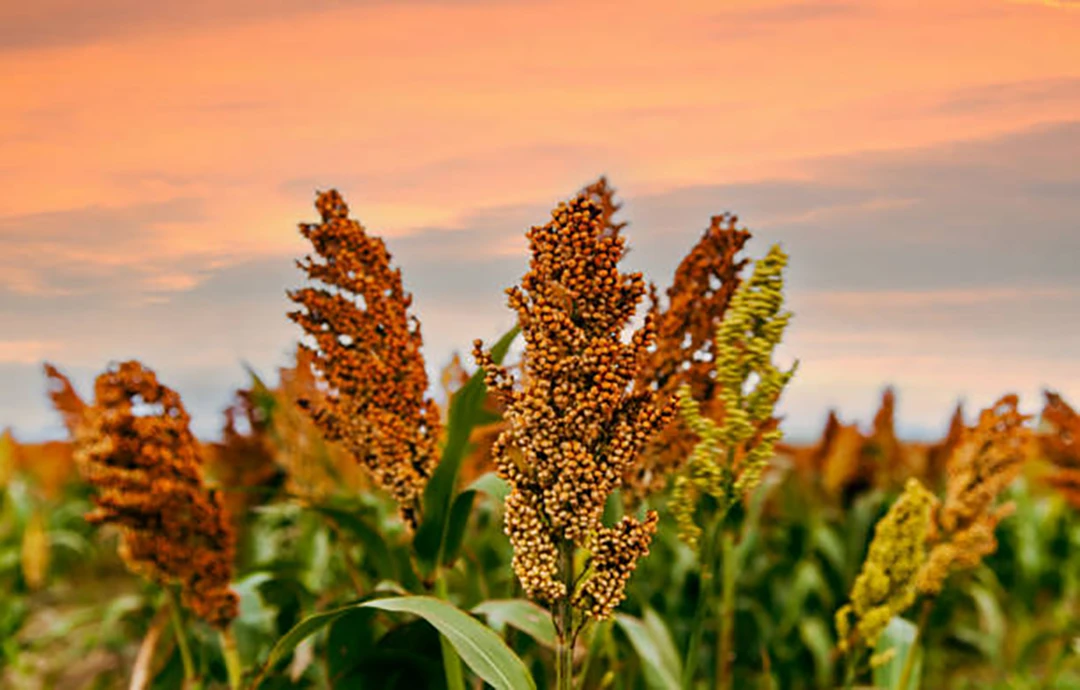
Sorghum can be beneficial for individuals with anemia due to its nutrient profile. This ancient grain is a good source of iron, which is essential for the production of hemoglobin in red blood cells. Additionally, sorghum contains other nutrients that support blood health, such as vitamin B6, which aids in the formation of hemoglobin, and copper, which helps in iron absorption and utilization. The grain also provides protein, which is necessary for the production of red blood cells. Sorghum’s high fiber content may help in the gradual release of nutrients, potentially improving iron absorption over time. Furthermore, sorghum contains antioxidants that can protect red blood cells from oxidative stress.
What Research Says?
- According to investigations conducted by Nutrition, Sorghum bicolor extract significantly increases red blood cell count, hematocrit, and hemoglobin concentration in patients with preoperative anemia, outperforming routine hematinics alone.
- Research efforts by Journal of Ethnopharmacology show that Aqueous extract of Sorghum bicolor stem bark significantly increases hemoglobin, packed cell volume, and red blood cells in both iron-sufficient and iron-deficient rats.
- As demonstrated by research from BMC Public Health, Sorghum-based Ready-To-Use Therapeutic Foods (RUTF) are more effective in correcting anemia and iron deficiency than standard formulations, showing the lowest prevalence of anemia and iron deficiency anemia (IDA) at discharge.
- Research initiated by Current Developments in Nutrition suggests Sorghum-based fortified blended foods (FBFs) significantly improve anemia and vitamin A deficiency, showing similar efficacy to other newly formulated FBFs in improving these micronutrient outcomes.
- According to the research carried out by Frontiers in Nutrition, Regular consumption of millets, including sorghum, significantly increases hemoglobin levels and reduces iron deficiency anemia, with traditional processing methods enhancing iron bioavailability.
How to Use
To use sorghum for anemia, incorporate it into your daily diet as a versatile grain. Cook sorghum like rice and use it as a base for salads, soups, or stir-fries. Add cooked sorghum to breakfast bowls or use sorghum flour in baking. For maximum iron absorption, pair sorghum with vitamin C-rich foods like citrus fruits or bell peppers. Sorghum porridge is a nutritious breakfast option. Aim for 1/2 to 1 cup of cooked sorghum daily. Remember to consult a healthcare professional before making significant dietary changes to manage anemia.
Potential side effects of Sorghum
Sorghum is generally safe when consumed in moderate amounts. However, some people may experience digestive issues like bloating or gas due to its high fiber content. In rare cases, allergic reactions may occur, causing symptoms such as itching, swelling, or difficulty breathing. Excessive consumption of sorghum may lead to mineral imbalances due to its phytic acid content, which can interfere with mineral absorption.
Who should avoid Sorghum
Individuals with grass pollen allergies should be cautious when consuming sorghum, as it may trigger allergic reactions. People with digestive disorders like irritable bowel syndrome (IBS) may need to limit sorghum intake due to its high fiber content. Those with gluten sensitivity should ensure their sorghum products are not cross-contaminated with gluten-containing grains. Pregnant and breastfeeding women should consult their healthcare provider before adding significant amounts of sorghum to their diet.
Interaction with medications
Sorghum may interact with certain medications, particularly those affecting blood sugar levels, as it can potentially lower blood glucose. Individuals taking diabetes medications should monitor their blood sugar closely when consuming sorghum. Its high fiber content may also interfere with the absorption of some medications. People taking any regular medications should consult their healthcare provider before significantly increasing their sorghum intake to avoid potential interactions.
7. Curcuma xanthorrhiza
Curcuma xanthorrhiza, also known as Javanese turmeric, may offer some benefits for individuals with anemia, although research specifically on its effects on anemia is limited. This plant contains curcumin, which has anti-inflammatory and antioxidant properties that can potentially support overall health. However, it’s important to note that curcumin can interfere with iron absorption, which is crucial for treating iron-deficiency anemia. A study examining herbs containing Curcuma xanthorrhiza, along with other plants, found that while it didn’t significantly improve hemoglobin levels or other blood parameters in iron deficiency anemia patients, it did enhance their quality of life. This suggests that while Curcuma xanthorrhiza may not directly treat anemia, it could potentially be used as a complementary therapy to improve overall well-being in anemic patients.
What Research Says?
- Studies conducted by Biodiversitas, Journal of Biological Diversity indicate Herbs containing Curcuma xanthorrhiza, along with Elephantopus scaber L and Amaranthus tricolor L, significantly improved the quality of life (QOL) in IDA patients after 4 weeks of intervention.
How to Use
To use Curcuma xanthorrhiza for anemia, incorporate it into your diet as a supplement or spice. Typically, 250-500mg of Curcuma xanthorrhiza extract can be taken daily, divided into two doses. Add the powdered root to smoothies, teas, or cooking. However, it’s crucial to note that while Curcuma xanthorrhiza may have some benefits, it can potentially interfere with iron absorption. Therefore, it’s best to consume it between meals rather than with iron-rich foods or supplements. Always consult a healthcare professional before using Curcuma xanthorrhiza as a treatment for anemia, as individual needs may vary.
Potential side effects of Curcuma xanthorrhiza
Curcuma xanthorrhiza may cause gastrointestinal issues such as stomach irritation, nausea, and diarrhea, especially when taken in large amounts. Some individuals may experience headaches or skin rashes. In rare cases, high doses might lead to liver damage. It’s important to note that long-term effects of Curcuma xanthorrhiza supplementation are not well-studied, so caution is advised when using it for extended periods.
Who should avoid Curcuma xanthorrhiza
Pregnant and breastfeeding women should avoid Curcuma xanthorrhiza due to insufficient safety data. Individuals with liver or gallbladder diseases should not use it as it can increase bile production and potentially worsen their condition. People with bleeding disorders or scheduled for surgery should also avoid it due to its potential blood-thinning effects. Those with known allergies to plants in the ginger family should exercise caution.
Interaction with medications
Curcuma xanthorrhiza may interact with several medications. It can enhance the effects of blood thinners like warfarin, increasing the risk of bleeding. It may also interact with diabetes medications, potentially causing low blood sugar. Curcuma xanthorrhiza can affect drugs metabolized by UGT and GST enzymes, potentially altering their effectiveness. Always consult a healthcare provider before combining Curcuma xanthorrhiza with any medications, especially blood thinners, diabetes drugs, or liver-metabolized medications.
8. Elephantopus scaber
Elephantopus scaber, also known as Tapak Liman, has shown promising potential in treating anemia. A study conducted on anemic mice demonstrated that the ethanol extract of Elephantopus scaber leaves had a significant hematopoietic effect. The research, carried out over 28 days, revealed that the extract could increase erythrocyte, hemoglobin, reticulocyte, and hematocrit counts in the anemic subjects. These findings suggest that Elephantopus scaber could stimulate the production of red blood cells and improve overall blood parameters. Additionally, a clinical study examining herbs containing Elephantopus scaber, along with other plants, found that while it didn’t significantly improve hemoglobin levels or other blood parameters in iron deficiency anemia patients, it did enhance their quality of life.
What Research Says?
- Research executed by Biodiversitas, Journal of Biological Diversity reveals Herbs containing Elephantopus scaber, along with Curcuma xanthorrhiza and Amaranthus tricolor, significantly improved the quality of life (QOL) in IDA patients after 4 weeks of intervention, as measured by the SF-36 score.
- As shown by research done by Journal of Ethnopharmacology, Elephantopus scaber has potent anti-inflammatory effects by inhibiting NF-κB p65-DNA binding activity in LPS-activated macrophages, which reduces the production of pro-inflammatory cytokines such as TNF-α, IL-6, MCP-1, and IL-1β.
How to Use
To use Elephantopus scaber for anemia, prepare an extract from the dried leaves. Typically, 250-500mg of the extract can be taken daily, divided into two doses. You can also make a tea by steeping 1-2 teaspoons of dried, crushed leaves in hot water for 10-15 minutes. For maximum benefit, consume between meals to avoid potential interference with iron absorption. However, it’s crucial to consult a healthcare professional before using Elephantopus scaber as a treatment for anemia, as individual needs may vary and more research is needed to establish optimal dosing and long-term safety.
Potential Side Effects of Elephantopus scaber
While Elephantopus scaber is generally considered safe, some individuals may experience mild gastrointestinal discomfort, such as nausea or diarrhea. In rare cases, allergic reactions may occur, manifesting as skin rashes or itching. Prolonged use or high doses may potentially lead to liver stress, although this is uncommon with normal therapeutic doses.
Who Should Avoid Elephantopus scaber
Pregnant and breastfeeding women should avoid using Elephantopus scaber due to insufficient safety data. Individuals with liver disorders or those taking hepatotoxic medications should consult a healthcare professional before use. People with known allergies to plants in the Asteraceae family should exercise caution, as cross-reactivity may occur.
Interaction with Medications
Elephantopus scaber may interact with certain medications, particularly those metabolized by the liver. It may potentially enhance the effects of blood-thinning medications and interact with drugs used to treat diabetes or high blood pressure. Patients taking any prescription medications should consult their healthcare provider before using Elephantopus scaber to avoid potential adverse interactions.
9. Amaranthus tricolor
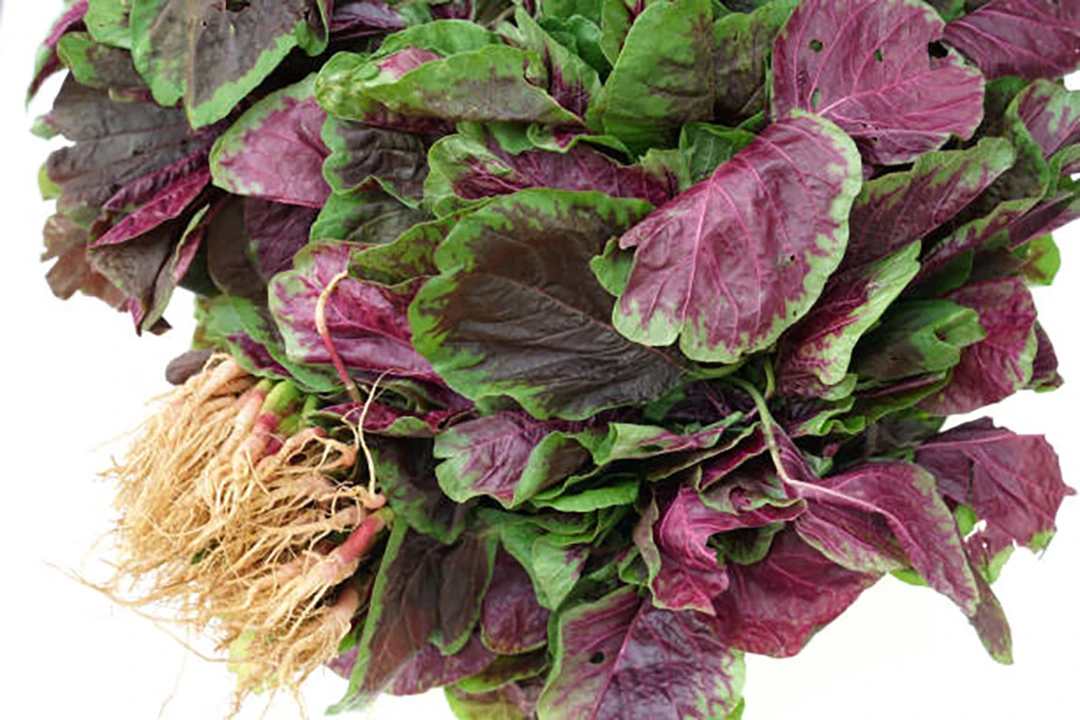
Amaranthus tricolor has shown promising potential in addressing anemia, particularly due to its high iron content. Consuming processed amaranth bread can significantly increase hemoglobin concentration and reduce anemia prevalence in children. The iron content in Amaranthus tricolor seeds is notably higher than that found in wheat, other seeds, spinach, and even meat, making it an excellent dietary supplement for individuals with anemia symptoms. Consumption of amaranth-enriched bread by children in underdeveloped countries led to a decrease in anemia prevalence and an increase in mean hemoglobin concentration, with the risk of iron deficiency anemia significantly reduced from 35% to 15%.
What Research Says?
- Findings from studies performed by Research.Publish.Connect. indicate Consumption of Amaranthus tricolor juice significantly increased hemoglobin levels in female workers, suggesting its effectiveness in combating anemia.
- Research performed by Research Square shows Supplementation with Amaranthus tricolor leaf powder in diversified meals significantly increased hemoglobin concentrations in children, indicating its potential in preventing and treating anemia.
- According to the findings from research conducted by Biodiversitas, Journal of Biological Diversity, A study found that herbs containing Amaranthus tricolor improved the quality of life in iron deficiency anemia patients, although it did not significantly affect hemoglobin, mean corpuscular volume, serum iron, or total iron-binding capacity compared to iron supplements.
How to Use
Amaranthus tricolor can be effectively used to combat anemia by incorporating it into one’s diet. Consuming processed amaranth bread has been shown to significantly increase hemoglobin concentration and reduce anemia prevalence. To maximize its benefits, amaranth can be processed through soaking, germinating, or fermenting to decrease phytate levels and improve iron bioavailability. Adding amaranth to daily meals, such as in bread made with 70% amaranth grain and 30% chickpea, can provide a substantial iron boost. Regular consumption of amaranth-enriched foods can help decrease the risk of iron deficiency anemia.
Potential Side Effects of Amaranthus tricolor
Amaranthus tricolor is generally considered safe when consumed in food amounts. However, some individuals may experience mild gastrointestinal discomfort, such as bloating or gas, due to its high fiber content. In rare cases, allergic reactions may occur, manifesting as rashes or difficulty breathing. Consuming large quantities of raw amaranth may lead to minor digestive issues due to its oxalic acid content.
Who Should Avoid Amaranthus tricolor
Pregnant and breastfeeding women should exercise caution when consuming Amaranthus tricolor as a medicinal supplement due to insufficient safety data. Individuals with known allergies to plants in the Amaranthaceae family should avoid it. People with kidney stones or those prone to developing them may need to limit intake due to the plant’s oxalate content. Those with digestive sensitivities should introduce it gradually.
Interaction with Medications
While specific drug interactions with Amaranthus tricolor have not been extensively studied, its high iron content may potentially interfere with the absorption of certain medications. Individuals taking iron-sensitive drugs, such as thyroid medications or antibiotics, should consult their healthcare provider before consuming large amounts of amaranth. Additionally, its potential effects on blood sugar levels suggest caution for those taking diabetes medications.
10. Beet Root
Beetroot is indeed highly beneficial for individuals suffering from anemia. Its remarkable nutritional profile makes it an excellent dietary choice for combating this condition. Beetroot is rich in iron, which is essential for the formation of hemoglobin, the protein responsible for transporting oxygen throughout the body. Additionally, it contains folate, a crucial nutrient for red blood cell production, and vitamin C, which enhances the absorption of iron from plant sources.
What Research Says?
- Studies executed by Medical and Health Journal and Journal of Issues in Midwifery indicate Beetroot consumption significantly increases hemoglobin levels and red blood cell counts in anemic individuals, including pregnant women, adolescents, and rats.
- Research work done by International Journal of Food Science and Biotechnology suggests Beetroot is rich in iron, folic acid, and vitamin C, which are crucial for hematopoiesis and improving hemoglobin levels.
- As evidenced by research led by Environmental Science and Pollution Research and International Journal of Food Science and Biotechnology, Beetroot extract and powder have shown comparable or superior efficacy in increasing hemoglobin and red blood cell counts compared to traditional iron supplements in animal studies.
- Research undertaken by International Journal of Endorsing Health Science Research shows Beetroot has been administered in various forms, including juice, extract, powder, and even as part of food items like biscuits, all showing positive effects on anemia.
How to Use
To effectively use beetroot for anemia, incorporate it into your daily diet in various forms. Drink fresh beetroot juice, starting with 100ml daily and gradually increasing to 200ml. Include cooked beetroot in salads or as a side dish. For optimal iron absorption, pair beetroot with vitamin C-rich foods like citrus fruits or bell peppers. Roast beetroot with a drizzle of lemon juice to enhance flavor and nutrient absorption. Alternatively, add raw grated beetroot to smoothies or juices for a nutritional boost. Consistency is key in reaping the benefits of beetroot for anemia.
Potential Side Effects of Beetroot
Beetroot consumption may cause beeturia, resulting in pink or red-colored urine and stools, which is harmless but can be mistaken for blood. Some individuals may experience gastrointestinal discomfort, including bloating, gas, or stomach upset due to its high fiber content. In rare cases, allergic reactions may occur, manifesting as rashes, hives, or itchiness. Excessive intake might lead to a temporary increase in oxalate levels, potentially affecting those prone to kidney stones.
Who Should Avoid Beetroot
Individuals with a history of kidney stones or those advised to follow a low-oxalate diet should moderate their beetroot intake due to its high oxalate content. People with low blood pressure or those on blood pressure-lowering medications should consult a healthcare provider before consuming beetroot, as it may further lower blood pressure. Diabetic patients should monitor their beetroot consumption due to its natural sugar content. Pregnant women should consult their doctor before adding beetroot to their diet.
Interaction with Medications
Beetroot may interact with certain medications. Its high nitrate content can potentially enhance the effects of blood pressure-lowering drugs, leading to excessively low blood pressure. Beetroot might also interfere with the absorption of other nutrients and medications. Individuals taking blood thinners like warfarin should exercise caution, as beetroot’s nutrient profile could potentially affect blood clotting. Always consult a healthcare provider before combining beetroot with any medications.
FAQs
- Can anemia be cured by using herbs alone?
While some herbs can help manage and improve anemia symptoms, they should not be used as a sole treatment. Anemia often requires a comprehensive approach, including dietary adjustments, supplements, and addressing the underlying causes. Always consult a healthcare professional before relying solely on herbal remedies.
- Which type of anemia benefits the most from herbal treatment?
Herbal treatments are most effective for nutritional deficiencies, such as iron-deficiency anemia, folate deficiency anemia, and mild vitamin B12 deficiency. They might not be as effective for genetic conditions like sickle cell anemia or thalassemia, which require specific medical interventions.
- Are there any age restrictions for using herbs to treat anemia?
Herbs can be used by people of all ages, but the dosage and type of herb may need to be adjusted based on age, weight, and health condition. For instance, children, pregnant women, and elderly individuals should consult a healthcare provider to determine the appropriate type and dosage.
- How long does it take for herbs to show improvement in anemia symptoms?
The time frame can vary depending on the severity of the anemia and the type of herb used. Some individuals may notice improvements in a few weeks, while others may require several months of consistent use. Regular monitoring of hemoglobin and iron levels is essential.
- Can herbal remedies for anemia cause overdose or toxicity?
Yes, consuming excessive amounts of certain herbs like saffron, cumin, or beetroot can lead to side effects and potential toxicity. It is crucial to adhere to recommended dosages and consult a healthcare professional to avoid complications.
- Are there any specific foods that enhance or inhibit the effectiveness of herbs for anemia?
Foods rich in vitamin C (like citrus fruits) can enhance iron absorption when taken with herbs like cumin, ginger, or beetroot. On the other hand, foods containing calcium, tannins (like tea and coffee), and phytates (like some whole grains) can inhibit iron absorption, reducing the effectiveness of herbal treatments.
- Can I use multiple herbs together to treat anemia?
Some herbs may complement each other when used together, but combining them without professional guidance could lead to adverse effects or drug interactions. It’s advisable to consult a healthcare provider before using a combination of herbs.
- Are there any long-term risks associated with using herbs for anemia?
Long-term use of certain herbs may pose risks, such as liver damage or interactions with medications. Monitoring and guidance from a healthcare provider can help mitigate these risks.
- What are the best practices for taking herbal supplements for anemia?
It’s best to take herbal supplements for anemia alongside meals to reduce the risk of stomach upset and to pair them with vitamin C-rich foods to boost iron absorption. Also, following the recommended dosage and having regular blood tests to monitor anemia levels is essential.
- Can herbal remedies for anemia interact with my current medications?
Yes, certain herbs can interact with medications like blood thinners, diabetes drugs, and blood pressure medications. For instance, saffron can enhance the effects of sedative drugs, while ginger may interact with blood-thinning medications. Always discuss your herbal remedy plans with a healthcare provider if you are on other medications.





